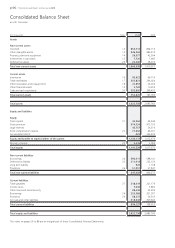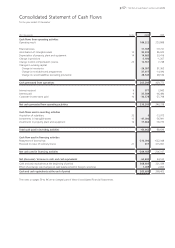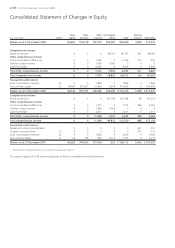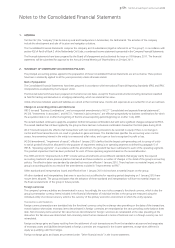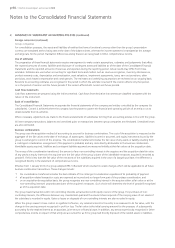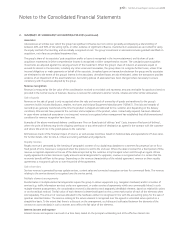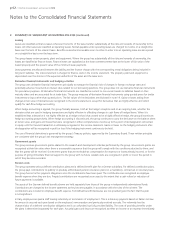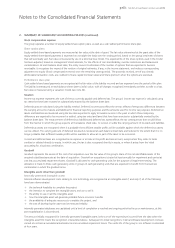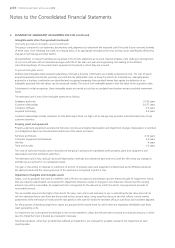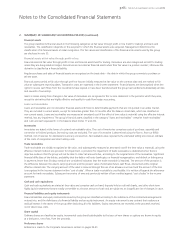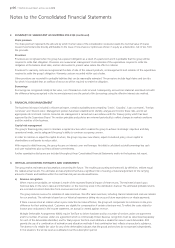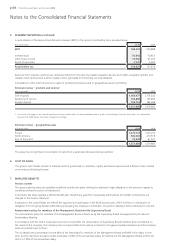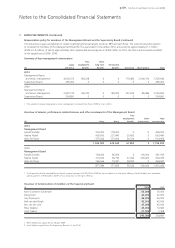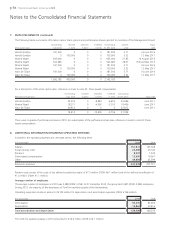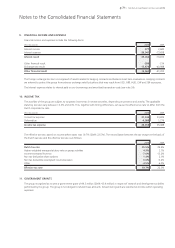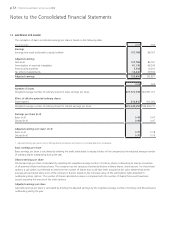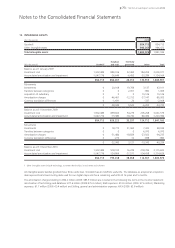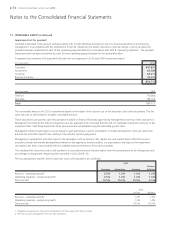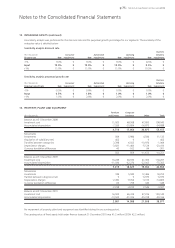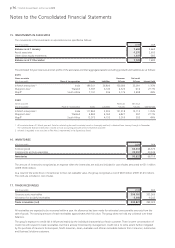TomTom 2010 Annual Report Download - page 68
Download and view the complete annual report
Please find page 68 of the 2010 TomTom annual report below. You can navigate through the pages in the report by either clicking on the pages listed below, or by using the keyword search tool below to find specific information within the annual report.p 66 / TomTom Annual Report and Accounts 2010
2. SUMMARY OF SIGNIFICANT ACCOUNTING POLICIES (continued)
Share premium
The share premium represents the amount by which the fair value of the consideration received exceeds the nominal value of shares
issued. Incremental costs directly attributable to the issue of new shares or options are shown in equity as a deduction, net of tax, from
the proceeds.
Provisions
Provisions are recognised when the group has a present obligation as a result of a past event and it is probable that the group will be
required to settle that obligation. Provisions are measured at management’s best estimate of the expenditure required to settle the
obligation at the balance sheet date, and are discounted to present value where the effect is material.
Provisions for warranty costs are recognised at the date of sale of the relevant products, at management’s best estimate of the expenditure
required to settle the group’s obligation. Warranty costs are recorded within cost of sales.
Other provisions are recorded for probable liabilities that can be reasonably estimated. The provisions include legal claims and tax risks
for which it is probable that an outflow of resources will be required to settle the obligation.
Borrowings
Borrowings are recognised initially at fair value, net of transaction costs incurred. Subsequently, amounts are stated at amortised cost with
the difference being recognised in the income statement over the period of the borrowings using the effective interest rate method.
3. FINANCIAL RISK MANAGEMENT
The business risk report included in this annual report, contains auditable parts comprising ‘Credit’, ‘Liquidity’, ‘Loan covenants’, ‘Foreign
currencies’ and ‘Interest rates’. Management policies have been established to identify, analyse and monitor these risks, and to set
appropriate risk limits and controls. Financial risk management is carried out in accordance with the Treasury policy which has been
approved by the Supervisory Board. The written principles and policies are reviewed periodically to reflect changes in market conditions
and the activities of the business.
Capital risk management
The group’s financing policy aims to maintain a capital structure which enables the group to achieve its strategic objectives and daily
operational needs, and to safeguard the group’s ability to continue as a going concern.
In order to maintain or adjust the capital structure, the group may issue new shares, adjust its dividend policy, return capital to
shareholders or sell assets to reduce debt.
With respect to debt financing, the group focuses on interest cover and leverage. Net debt is calculated as total borrowings less cash
and cash equivalents plus our financial lease commitments.
Further quantitative disclosures are included throughout these Consolidated Financial Statements and/or in the business risk report.
4. CRITICAL ACCOUNTING ESTIMATES AND JUDGEMENTS
The group makes estimates and assumptions concerning the future. The resulting accounting estimates will, by definition, seldom equal
the related actual results. The estimates and assumptions that have a significant risk of causing a material adjustment to the carrying
amounts of assets and liabilities within the next financial year are discussed below.
a) Revenue recognition
When returns are probable, an estimate is made of the expected financial impact of these returns. The estimate is based upon
historical data on the return rates and information on the inventory levels in the distribution channel. The estimated probable returns
are recorded as a direct deduction from revenue and cost of sales.
The group reduces revenue for estimates of sales incentives. We offer sales incentives, including channel rebates and end-user rebates
for our products. The estimate is based on our historical experience taking into account future expectations on rebate payments.
If there is excess stock at retailers when a price reduction becomes effective, the group will compensate its customers on the price
difference for their existing stock. Customers are eligible for compensation if certain criteria are met. To reflect the costs related to
known price reductions in the income statement, an accrual is created against revenue.
Multiple Deliverable Arrangements (MDA) require TomTom to deliver hardware and/or a number of services under one agreement
and/or a number of services under one agreement which is commercially linked. Revenue recognition must be determined separately
for each of the deliverables identified, and for that purpose TomTom must attribute a reliable fair value to each deliverable. IFRS
permits the use of a combination of estimation and allocation methods if that combination best reflects a transaction’s substance.
The absence of a reliable fair value for any of the deliverables indicates that the goods and services do not operate independently.
In this situation, the whole revenue is allocated over the subscription period.
Notes to the Consolidated Financial Statements


